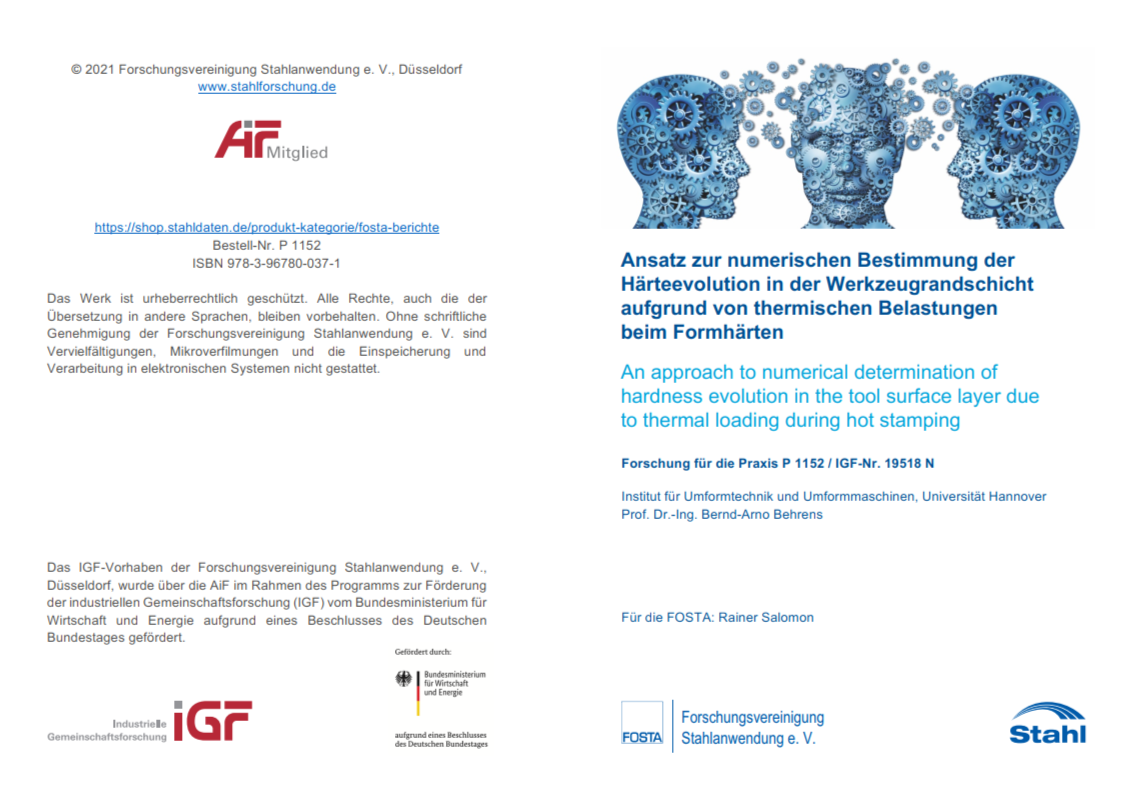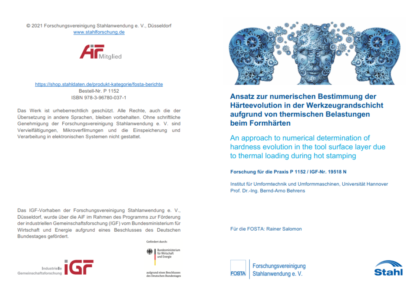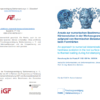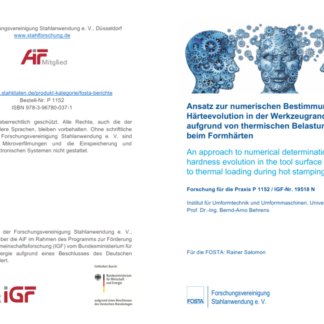Description
P 1152 – An approach to numerical determination of hardness evolution in the tool surface layer due to thermal loading during hot stamping
A process for the production of components with tailored properties is given by socalled tailored tempering with strongly heated tools (approx. 500°C), which is based on conventional hot stamping. In this process, the critical cooling rate of 22MnB5 is deliberately undercut and the formation of martensite in the component is suppressed. The increased tool temperature and the press forces that occur lead to a higher thermal load on the tool engraving and ultimately to wear phenomena that are dependent on the hardness evolution and the tempering effects that occur. This affects the dimensional accuracy of the components and the tools have to be reworked or even renewed in a cost- and time-intensive manner. More precise knowledge of the processes in the tool surface and their consideration in the numerical process design contribute to a significant increase in process understanding. The heat transfer between workpiece and tool is another important aspect. By knowing the influences on the service life of the tool materials, measures can be taken which can lead to significant cost savings for SMEs. Costly tool repairs can be reduced and tool life can be improved. The aim of the research project is to consider the hardness evolution of the tool material as a function of the number of thermal cycles in the wear calculation and thus to increase the quality of the results of the simulative pre-design. For this purpose, the hardness development was determined metallographically using the experimentally measured temperature curves in the tool surface during a model test. Based on these data, an analytical approach was developed and implemented in a commercial FE program, which allows the calculation of the local tool hardness as a function of the forming cycles and the
existing tool temperature. Finally, a validation was carried out within the framework of a self-designed and constructed model test for the production of components with locally controlled hardness distribution. With the implementation developed in the project, the hardness decrease in the tool could be realistically predicted, whereby the goal of the research project was achieved.
Published in:
2021
Authors:
Prof. Dr.-Ing. B.-A. Behrens




